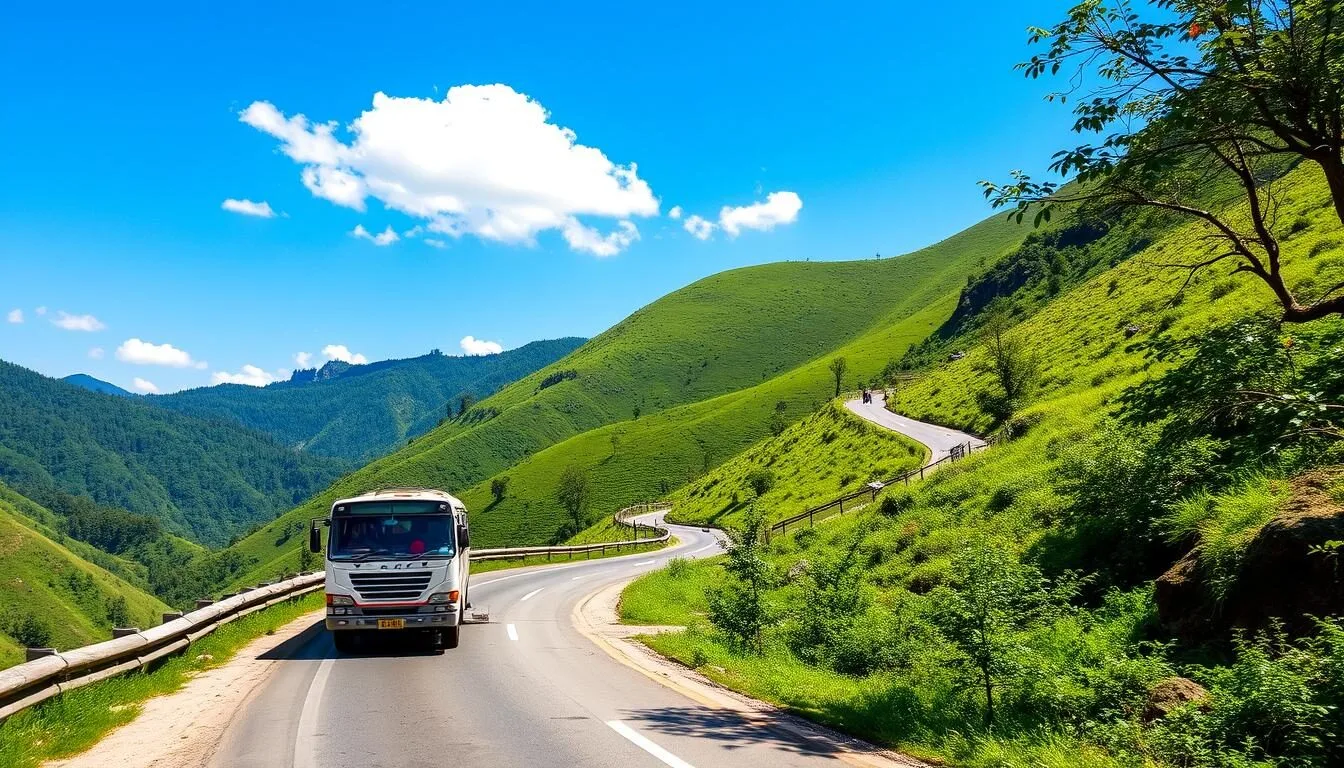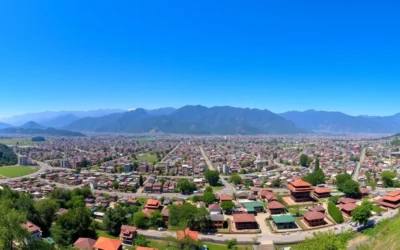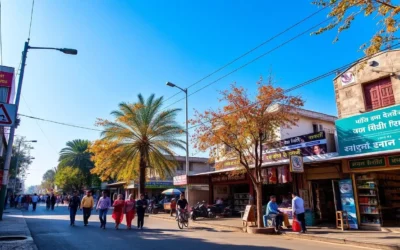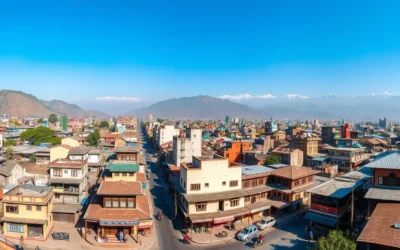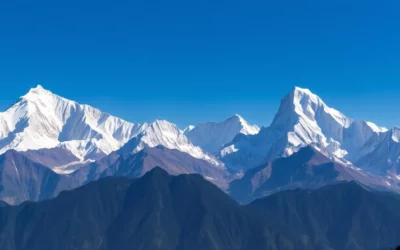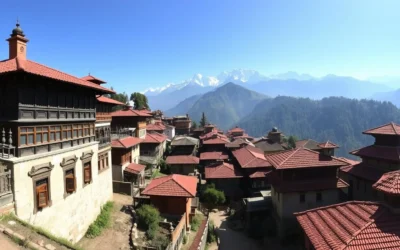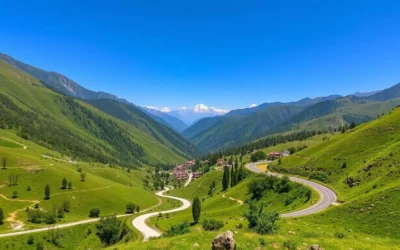✓ Accommodations✓ Flights✓ Rental Cars✓ Tours & Activities
Home to over 700 wildlife species, Chitwan National Park is one of Asia’s last refuges for endangered Bengal tigers and one-horned rhinos. This UNESCO World Heritage Site offers visitors the rare opportunity to witness these magnificent creatures in their natural habitat, with rhino sightings almost guaranteed during a 2-3 day visit—a success rate unmatched by most wildlife parks worldwide.
Getting to Chitwan National Park
Located in south-central Nepal, Chitwan National Park is approximately 150 km from Kathmandu and 180 km from Pokhara, forming part of Nepal’s popular “tourist triangle.” There are several ways to reach this wildlife haven:
By Bus
Tourist buses depart daily from Kathmandu and Pokhara to Sauraha (the main tourist hub adjacent to the park). The journey takes approximately 6-7 hours depending on traffic and road conditions. Companies like Blue Sky Travels, Mountain Overland, and Greenline offer comfortable options with prices ranging from 800-1500 Nepalese rupees ($8-15 USD).
By Air
For a quicker journey, flights operate from Kathmandu to Bharatpur Airport, which is about 25 km from Sauraha. The flight takes around 25 minutes, and most hotels can arrange airport transfers upon request.
Ready to Start Your Chitwan Adventure?
Book your flights to Nepal and begin your wildlife journey today!
Planning Your Journey to Chitwan
Park Permits
All visitors need to purchase a Chitwan National Park permit to enter the main park area. As of 2023, the permit costs 2,000 Nepalese rupees (approximately $15 USD) for foreign visitors, 1,000 rupees for SAARC country nationals, and 150 rupees for Nepali citizens. Permits are valid for one day, so if you’re planning multiple days of activities inside the park, you’ll need to purchase permits for each day.
Best Time to Visit
The optimal time to visit Chitwan is from October to March when the weather is pleasant and dry. During these months, the grasslands are shorter after the monsoon season, making wildlife spotting easier. The summer months (April to June) can be extremely hot and humid, while the monsoon season (July to September) may limit some activities due to flooding.
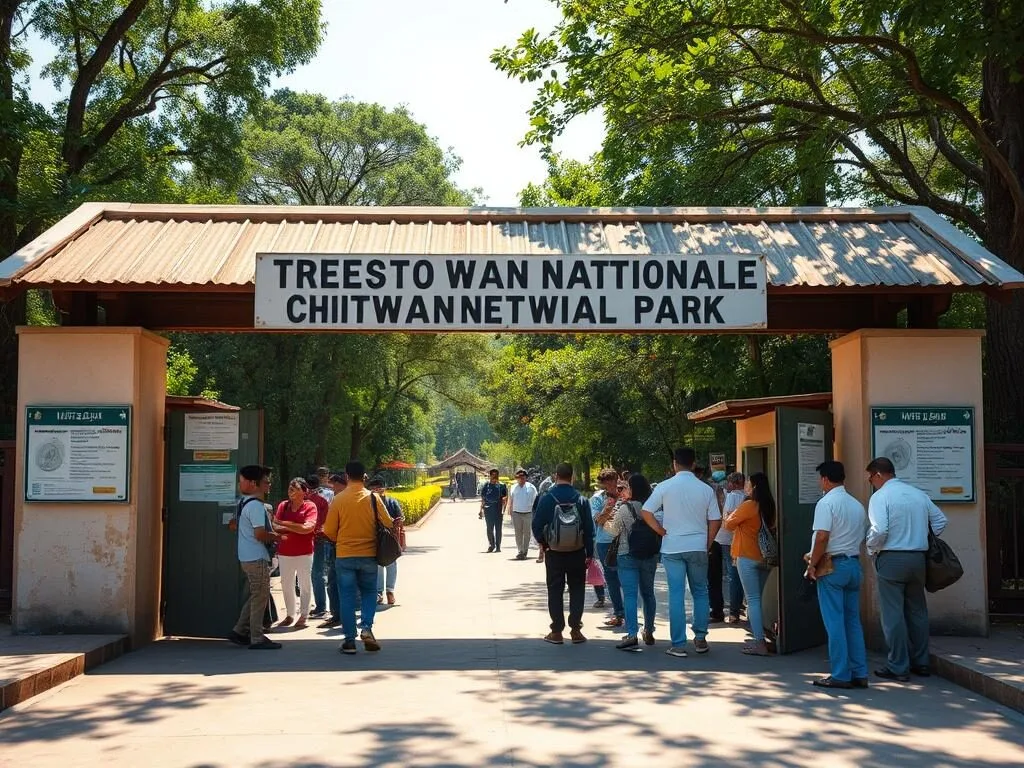
What should I pack for Chitwan National Park?
- Lightweight, neutral-colored clothing (avoid bright colors that might startle wildlife)
- Long-sleeved shirts and pants for protection from insects and sun
- Comfortable walking shoes or hiking boots
- Hat, sunglasses, and sunscreen
- Insect repellent (essential year-round)
- Binoculars for wildlife viewing
- Camera with zoom lens
- Light rain jacket (even in dry season)
- Small backpack for day trips
Wildlife Safari Experiences
Chitwan offers various safari options to explore its diverse ecosystems and spot its famous wildlife. Each experience provides a unique perspective of the park and its inhabitants.
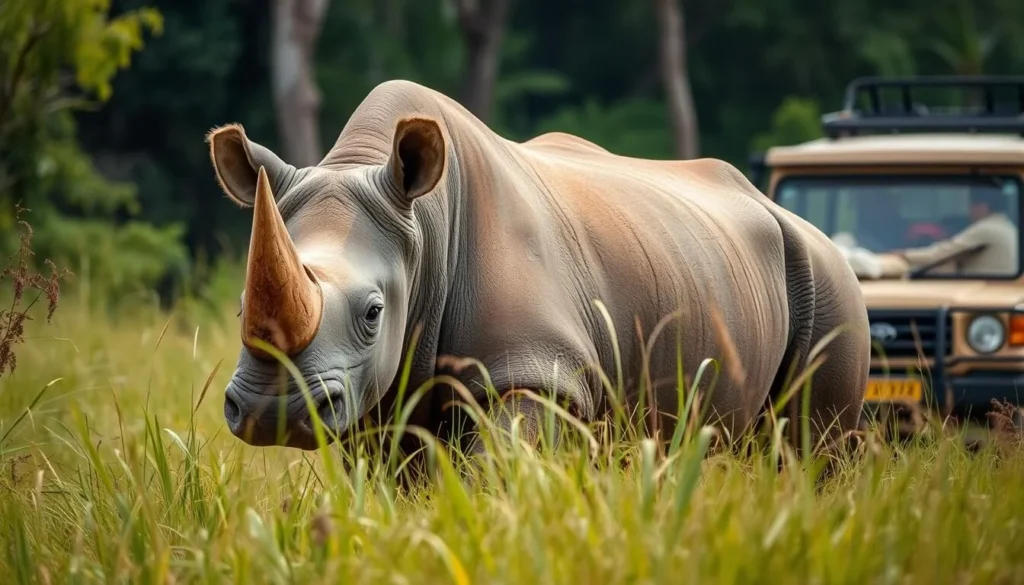
Jeep Safari
A jeep safari takes you deep into the park’s core areas where wildlife concentration is highest. These 3-5 hour excursions offer the best chance to cover more ground and potentially spot elusive tigers, though sightings are rare. Jeeps typically accommodate 6-8 people and include an experienced naturalist guide.
Cost: 4,000-5,000 NPR per person for shared jeeps
Walking Safari
For the adventurous traveler, walking safaris provide an intimate experience with the jungle. Accompanied by trained guides, these 3-hour treks allow you to observe smaller wildlife, bird species, and plant life up close. Safety briefings include instructions on what to do if you encounter large animals.
Cost: 1,500-2,800 NPR per person
Canoe Rides
Glide silently along the Rapti River in a traditional dugout canoe for a chance to spot crocodiles, gharials, and numerous bird species. These peaceful 1-hour rides are often combined with walking safaris and offer excellent photography opportunities in the early morning light.
Cost: 500-800 NPR per person
Experience Chitwan’s Wildlife Up Close
Book your safari adventure today for unforgettable wildlife encounters!
Book Safari Tours
Where to Stay in Chitwan
Most visitors stay in Sauraha, the main tourist hub located just outside the park boundaries. Accommodations range from budget guesthouses to luxury jungle lodges, with many offering package deals that include meals and activities.
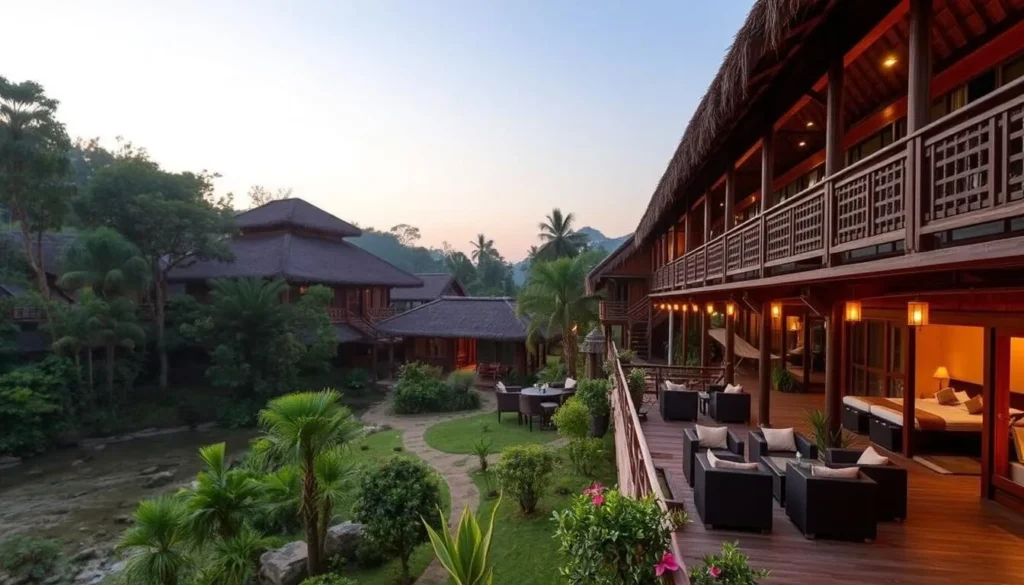
Luxury Lodges
Properties like Barahi Jungle Lodge and Tiger Tops Tharu Lodge offer premium experiences with spacious rooms, excellent dining, private balconies, and comprehensive activity packages. These lodges typically include expert naturalists and provide a more exclusive safari experience.
Price range: $150-300 USD per night
Mid-range Hotels
Establishments such as Jungle Wildlife Camp and Rhino Lodge provide comfortable accommodations with air conditioning, river views, and good dining options. Many offer activity packages at reasonable rates and are located within walking distance of Sauraha’s restaurants and shops.
Price range: $40-100 USD per night
Budget Options
For travelers on a tight budget, guesthouses like Chitwan Village Resort and Eden Jungle Resort offer clean, basic rooms with fans. While amenities are limited, these places provide good value and often have connections with local guides for arranging activities.
Price range: $15-35 USD per night
Find Your Perfect Jungle Retreat
Browse accommodations in Chitwan and secure your stay today!
Top Things to Do in Chitwan National Park
Beyond the classic safari experiences, Chitwan offers several other activities worth exploring during your visit.
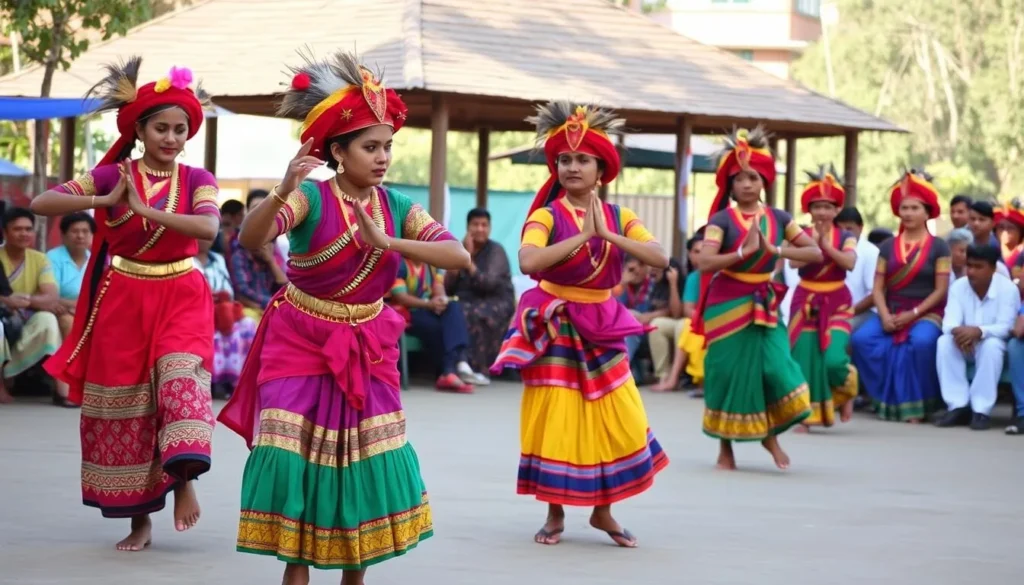
Tharu Cultural Shows
Experience the vibrant culture of the indigenous Tharu people through evening performances featuring traditional stick dances, peacock dances, and folk music. These shows provide insight into local customs and are typically held at the Tharu Cultural Center in Sauraha.
Cost: 200-300 NPR per person
Elephant Breeding Center
Located in Khorsor, about 3 km from Sauraha, this government-run facility focuses on elephant conservation. Visitors can observe baby elephants and learn about conservation efforts, though it’s important to note that the center has faced criticism regarding animal welfare practices.
Cost: 50 NPR entrance fee
Birdwatching
With over 540 bird species, Chitwan is a paradise for birdwatchers. Early morning guided tours to Bis Hajari Tal (Twenty Thousand Lakes) offer opportunities to spot kingfishers, hornbills, paradise flycatchers, and if you’re lucky, the endangered Bengal florican.
Best time: October to March
Sunset at Rapti River
One of the most magical experiences in Chitwan costs nothing at all. Head to the banks of the Rapti River in the evening to witness a spectacular sunset while possibly spotting wildlife coming to drink at the river’s edge. Several riverside bars and restaurants offer perfect viewing spots where you can enjoy a cold drink while waiting for rhinos and deer to appear.
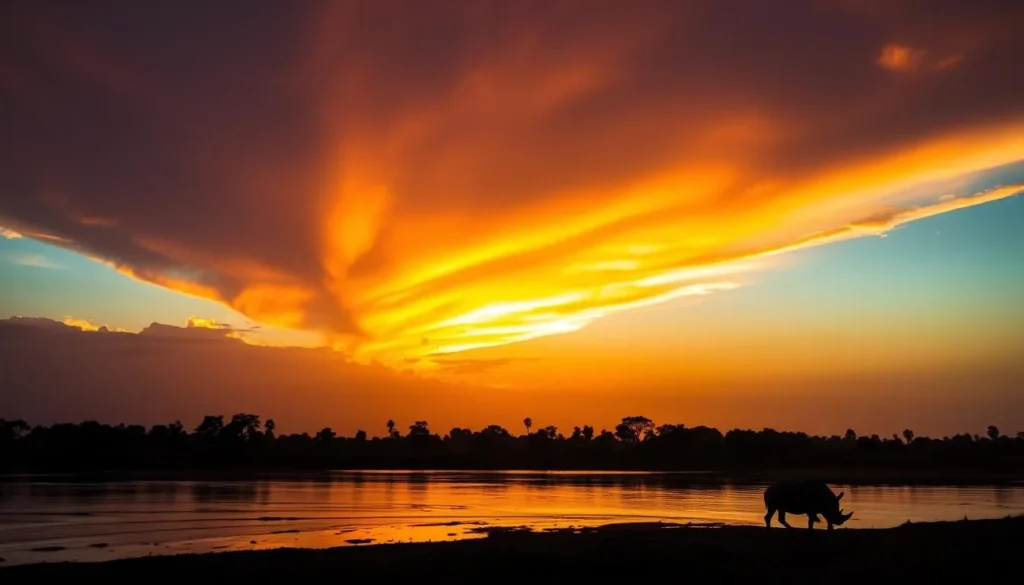
Practical Information
Getting Around
Within Sauraha, most places are within walking distance. For longer journeys, bicycle rentals are available for around 100-200 NPR per day. Taxis and auto-rickshaws can be hired for trips to nearby attractions like the Elephant Breeding Center. Most safari activities include transportation from your hotel.
Explore Chitwan at Your Own Pace
Rent a car for ultimate flexibility during your Nepal adventure.
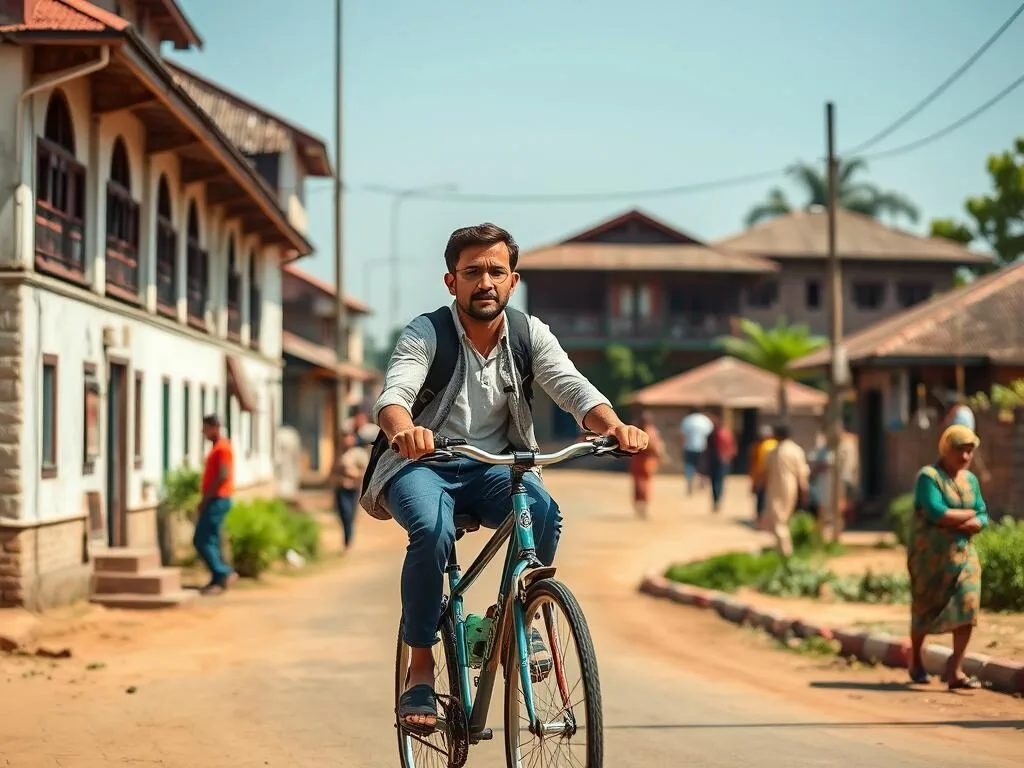
Money & Connectivity
ATMs are available in Sauraha, but it’s advisable to bring enough cash as machines can sometimes be unreliable. Most mid-range and luxury accommodations accept credit cards, though smaller establishments and local vendors prefer cash. Mobile coverage is generally good in Sauraha, with both Ncell and NTC networks available. Many hotels and restaurants offer free Wi-Fi, though connection speeds may be slow.
Health & Safety
Chitwan is generally safe for tourists, but basic precautions should be taken. Always follow guide instructions during wildlife activities. Carry insect repellent to protect against mosquitoes. Drink only bottled or purified water. Basic medical facilities are available in Sauraha, with more comprehensive services in nearby Bharatpur. Travel insurance with evacuation coverage is recommended.
Responsible Tourism
Support conservation efforts by respecting wildlife and following park rules. Avoid activities that exploit animals, particularly elephant riding, which has been criticized for animal welfare concerns. Choose guides and companies with strong environmental ethics. Respect local customs when visiting Tharu villages and always ask permission before taking photographs of people.
Where to Eat in Chitwan
Sauraha offers a variety of dining options catering to different tastes and budgets. Most restaurants serve a mix of Nepali, Indian, and Western dishes.
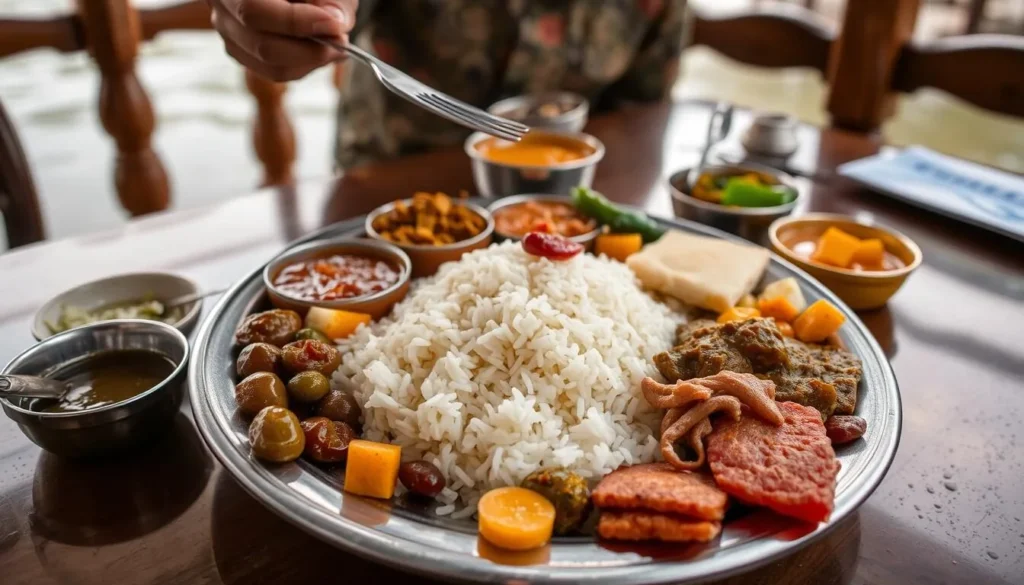
KC’s Garden Restaurant
A popular spot among travelers, KC’s offers a diverse menu in a pleasant garden setting. Their momo (Nepali dumplings) and thali sets are particularly good. Live Nepali music in the evenings adds to the ambiance.
Rapti Beach Bar & Restaurant
Located along the riverbank, this restaurant provides stunning sunset views and the possibility of spotting wildlife while dining. Their fresh fish dishes and barbecue options are recommended. Candlelit dinners create a magical atmosphere in the evening.
Himalaya Gurkha Coffee
Perfect for coffee lovers, this café serves excellent brews in an air-conditioned environment. Their breakfast menu is popular, and it’s a great place to relax between safari activities. Free Wi-Fi makes it a good spot to catch up on travel planning.
Wildlife You Can Spot in Chitwan
Chitwan National Park is home to an impressive array of wildlife, making it one of the premier nature destinations in South Asia.
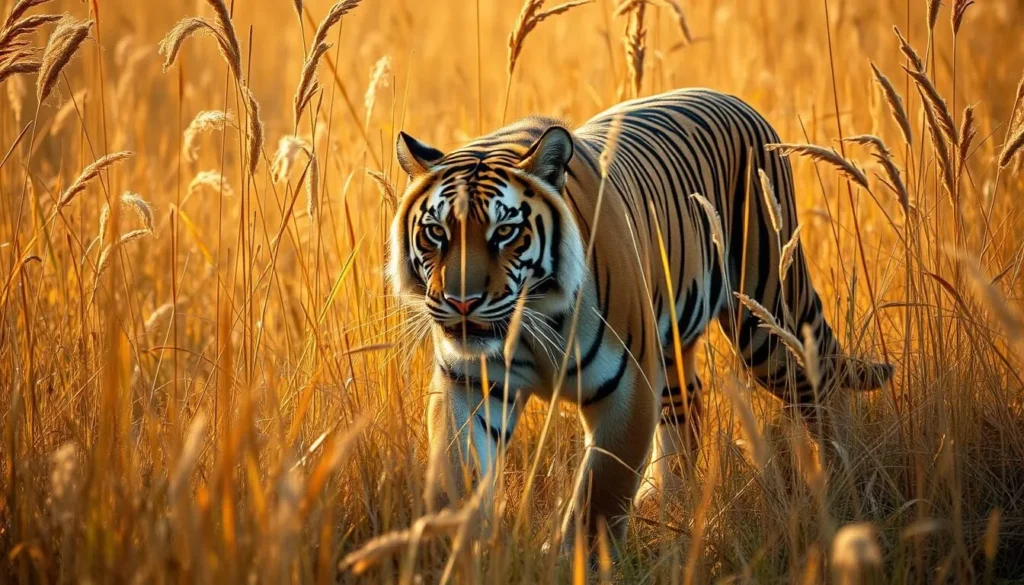
| Animal | Population in Chitwan | Best Time to Spot | Sighting Probability |
| One-horned Rhinoceros | ~600 | Early morning/late afternoon | Very High |
| Bengal Tiger | ~120 | Early morning | Low |
| Sloth Bear | ~200-250 | Morning | Medium-Low |
| Gharial Crocodile | ~100 | Midday (sunbathing) | High (on river safaris) |
| Wild Elephant | ~40-50 | Early morning | Medium-Low |
| Leopard | Unknown | Dawn/Dusk | Very Low |
Birdlife
Chitwan is a birdwatcher’s paradise with over 540 species recorded. Notable birds include the critically endangered Bengal florican, lesser adjutant stork, great hornbill, and several species of kingfishers and eagles. The park is also an important habitat for migratory birds that arrive during winter months.
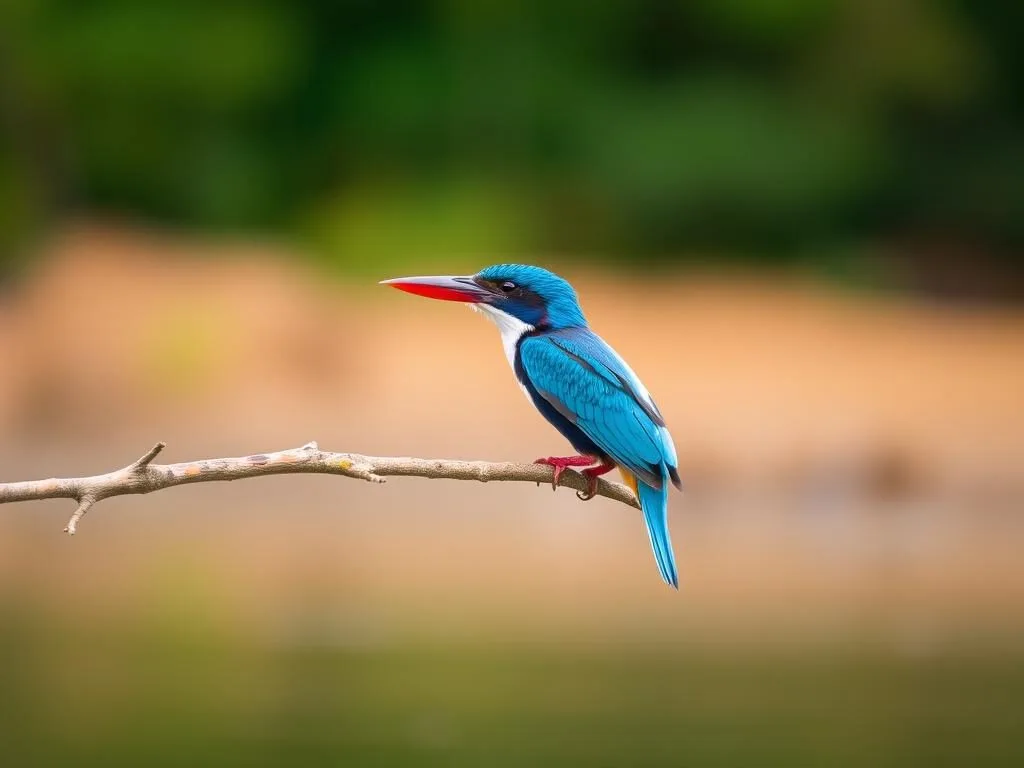
Sample 3-Day Itinerary
Make the most of your Chitwan visit with this balanced itinerary that combines wildlife viewing with cultural experiences.
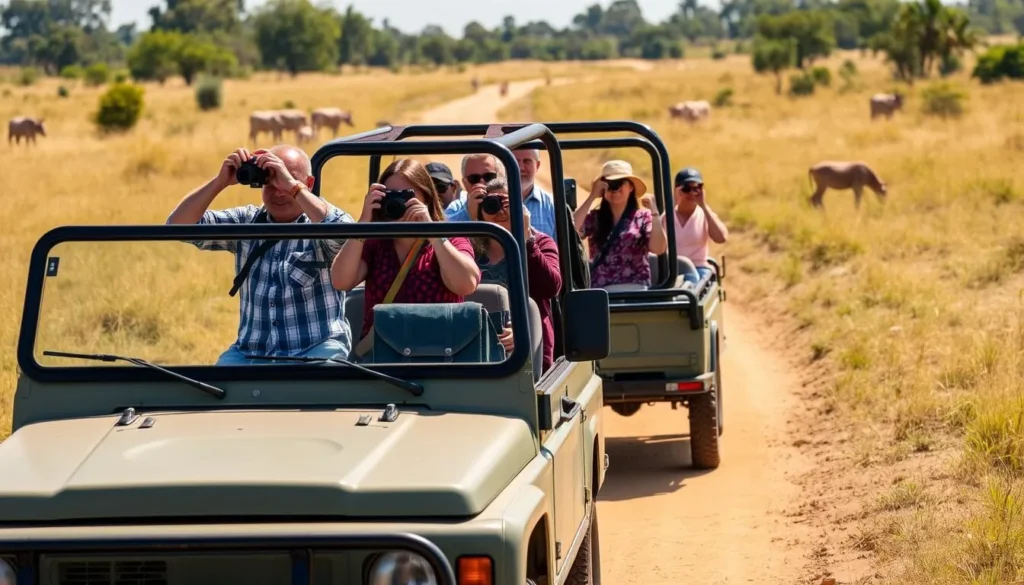
Day 1
- Morning: Arrive in Sauraha and check into your accommodation
- Afternoon: Orientation walk around Sauraha village
- Evening: Sunset at Rapti River with potential wildlife sightings, followed by a Tharu cultural show
Day 2
- Early Morning: Canoe ride on the Rapti River
- Morning: Walking safari in the jungle
- Afternoon: Visit the Elephant Breeding Center
- Evening: Relax at your lodge or explore local dining options
Day 3
- Early Morning: Jeep safari deep into the national park
- Afternoon: Birdwatching at Bis Hajari Tal
- Evening: Final sunset by the river before departure the next day
Ready for Your Chitwan Adventure?
Book your complete Nepal experience today!
Explore Tour Packages
Experience the Wild Heart of Nepal
Chitwan National Park offers a perfect complement to Nepal’s mountain adventures, allowing visitors to experience the country’s remarkable biodiversity and cultural richness. From the thrill of spotting a rhino in the wild to the tranquility of gliding along the river at sunset, Chitwan creates memories that last a lifetime. Whether you’re a wildlife enthusiast, photographer, or simply seeking to experience all facets of Nepal, this magnificent park deserves a place on your itinerary. The jungle is calling—are you ready to answer?
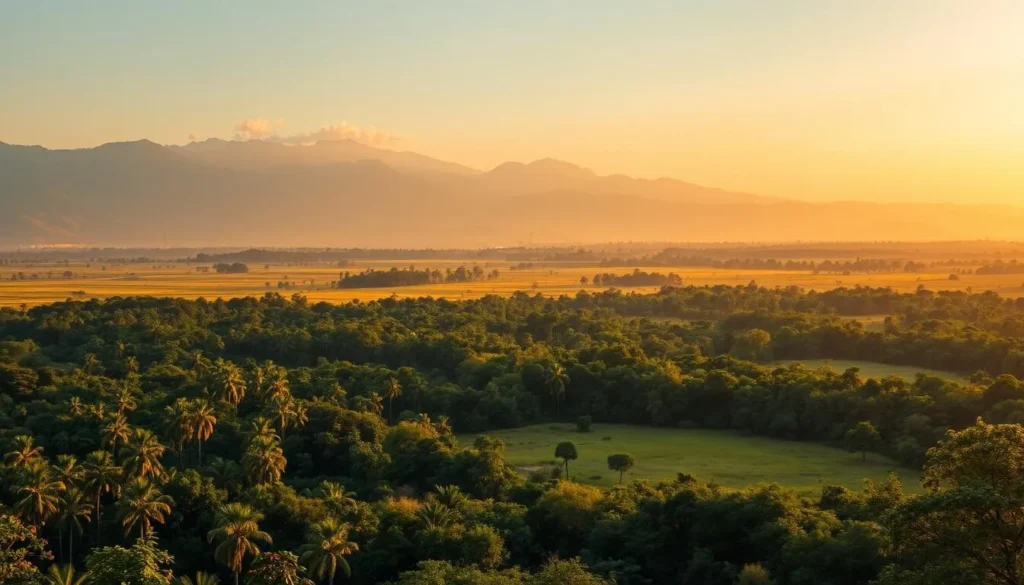
—
The above is subject to change.
Check back often to TRAVEL.COM for the latest travel tips and deals.
